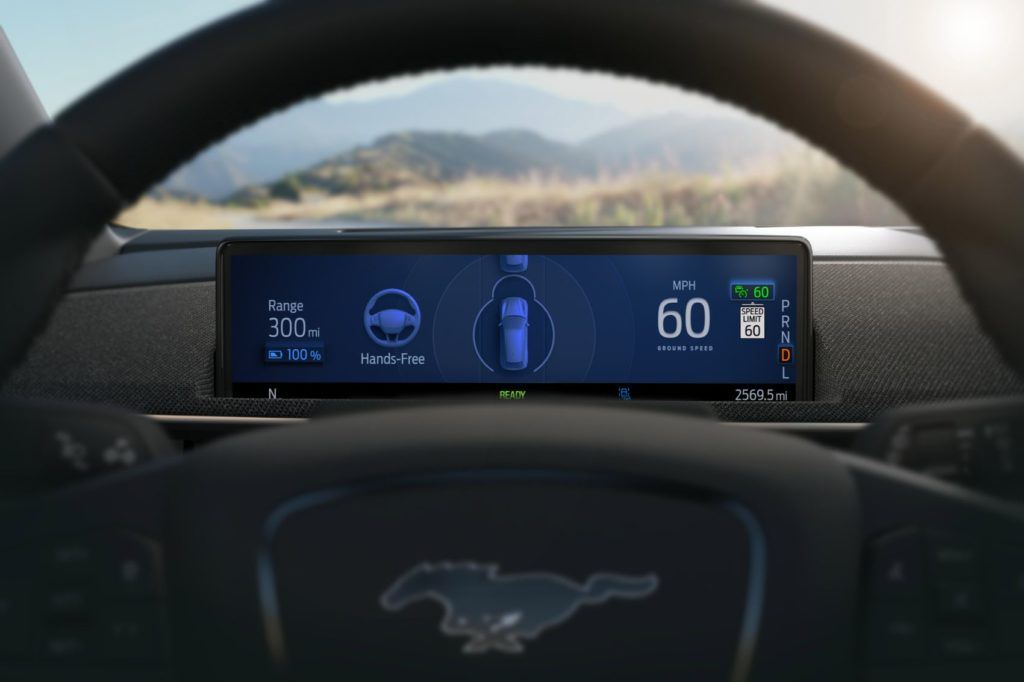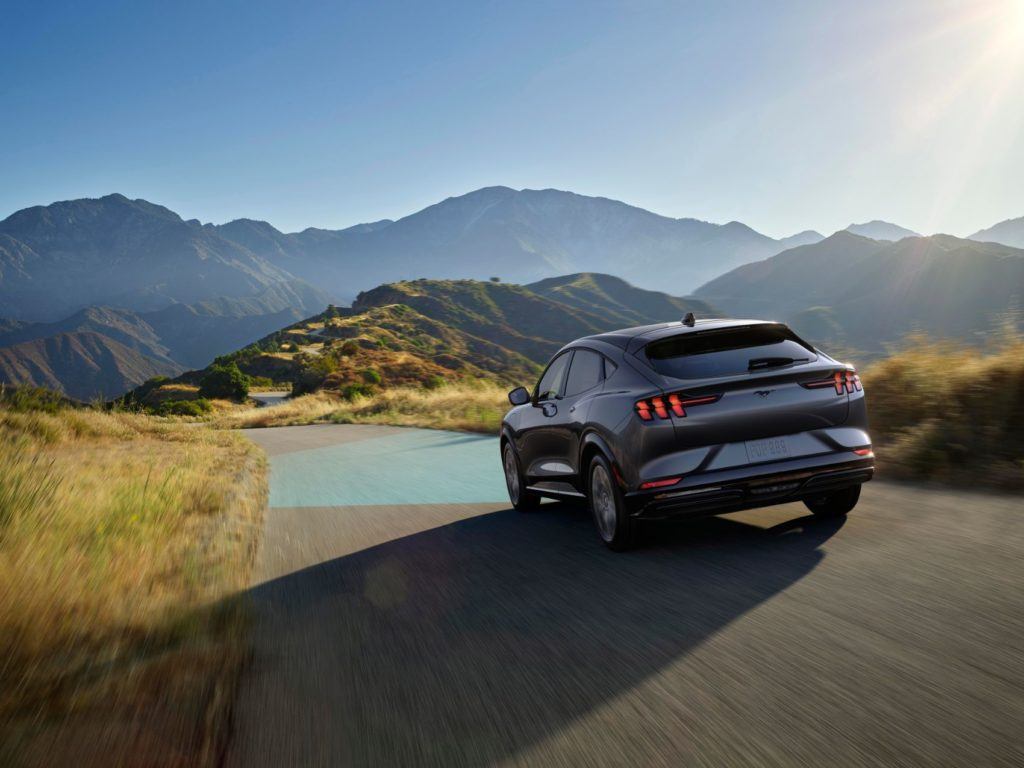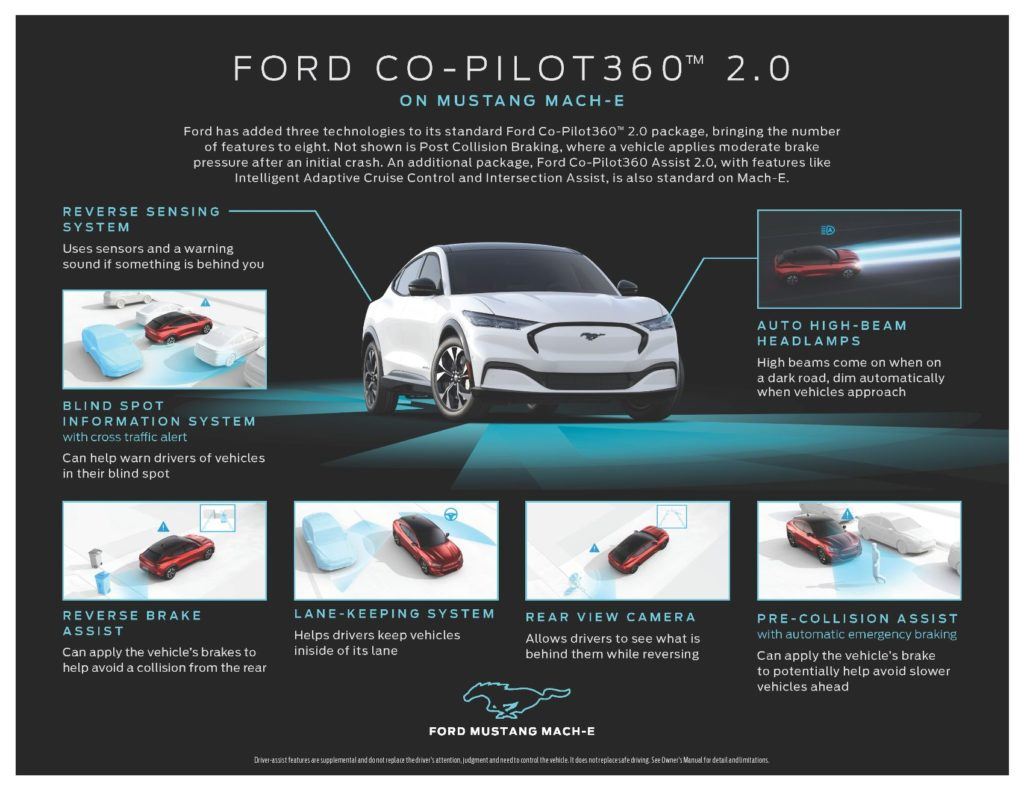Ford is expanding the capabilities of Co-Pilot360 to allow for hands-free driving on more than 100,000 miles of divided highways in the United States and Canada. The feature, known as Active Drive Assist, employs a driver-facing camera that monitors head position and eye gaze.
Active Drive Assist is part of the Co-Pilot360 Active 2.0 Prep Package, available for the forthcoming Mustang Mach-E. Customers who purchase the prep package can add Active Drive Assist software at a Ford dealer or via an over-the-air update expected in the third quarter of 2021. Ford says Active Drive Assist builds upon existing technologies like adaptive cruise control and will ease the cognitive task of driving.
“The stress of long highway drives remains a huge issue for drivers around the world,” explained Hau Thai-Tang, Ford’s chief product development and purchasing officer. “By introducing driver-assist technologies like Active Drive Assist, Ford’s version of hands-free driving, we’re allowing our customers to feel more confident whenever they’re behind the wheel.”
How Active Drive Assist Works
Like Cadillac’s Super Cruise, the Hands-Free Mode of Active Drive Assist lets owners remove their hands from the wheel on certain sections of pre-mapped, divided highways. The infrared driver-facing camera, mentioned above, tracks eye position and head movement to determine if drivers are paying attention to the road. If necessary, drivers will receive visual prompts to resume control of the vehicle.
“Introducing Active Drive Assist with a driver-facing camera makes perfect sense because the vehicle helps relieve the stress and burden of driving but still leaves you fully in control,” said Thai-Tang. “And if you lose focus on the road ahead, Active Drive Assist will automatically warn and potentially slow the vehicle down until you’re ready to focus back up.”

Comprehensive Testing & Validation
Ford subjected its Active Drive Assist test vehicles to a wide variety of weather and lighting conditions, including snow, rain, bright sun, and even nighttime driving. Engineers navigated through traffic jams and open roads alike, exposing the sensors to thousands of miles of different driving scenarios and situations across the U.S., Canada, and Europe.
“Our team has aggressively tested Active Drive Assist to bring something to our customers’ lives that they can trust,” said Justin Teems, Active Drive Assist feature lead. “We go to far-flung places around the U.S. and Canada – from Florida to California, from Quebec to Texas, Wyoming and Idaho – to try to stimulate those rare-case sensor measurements we might not get anywhere else, capturing data in a number of different ways.”
How ADAS systems operate in adverse weather, particularly ones that support higher levels of autonomy, was one of the main topics during the June edition of AutoSens ONLINE. In one presentation, Jacob Miller, AV Motion Planning and Control Systems Engineer for VSI Labs advocated for more robust testing. “We need to continue to improve sensor performance and redundancy through things like sensor cleaning,” he said. “Also, we need to gather more data from diverse weather conditions and make sure that we are accounting for those conditions.”

Co-Pilot360 2.0: New Enhancements
The standard Ford Co-Pilot360 2.0 package for the Mustang Mach-E includes two enhancements to Ford’s Lane-Keeping System: Road Edge Detection and Blind Spot Assist. Some of the best use cases for Road Edge Detection are in rural areas where the edges of the road are often met with dirt or grass. The system will alert the driver if the vehicle starts to drift off the road.
Blind Spot Assist does as the name suggests: it identifies other cars in the vehicle’s blind spot and provides a warning light on the outside mirror. However, the updated version of this system applies a “nudge” in the steering system to help caution against any unsafe actions a driver could make unintentionally.
Intersection Assist is also part of the expanded Co-Pilot360 2.0 package. When attempting to turn left, Intersection Assist will use the camera and radar to monitor oncoming traffic. The vehicle can alert the driver and apply the brakes if there’s a risk of a potential collision.

Additional Features & Availability
Co-Pilot360 Assist 2.0 for the Mustang Mach-E also includes Auto High-Beam Headlamps, Intelligent Adaptive Cruise Control with Stop and Go, Blind Spot Information System with Cross-Traffic Alert, Pre-Collision Assist with Automatic Emergency Braking, and Post-Collision Braking. Rearward applications for the Mach-E include a Rear View Camera, Reverse Brake Assist, and a Reverse Sensing System.
Ford says standard and available safety packages will vary by nameplate and will be announced closer to on-sale dates for 2021 model year vehicles. Most recently, Ford announced that Active Drive Assist would be available on the 2021 F-150.
Photos & Source: Ford Motor Company.


